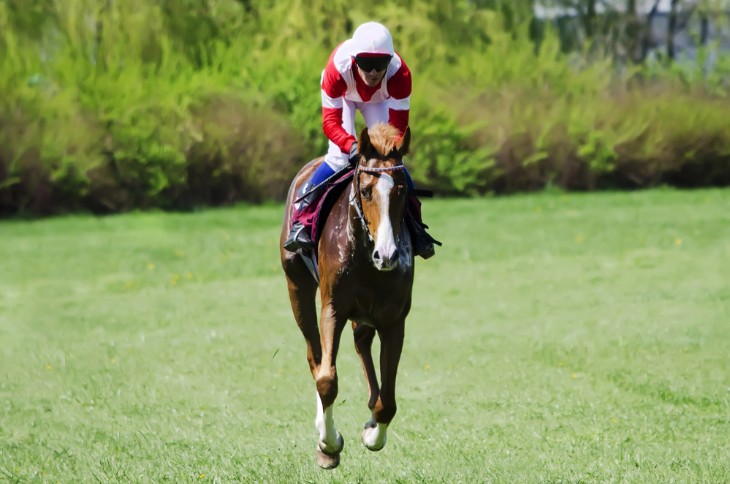In the world of In-Play Horse betting, where events occur at a fast pace knowing taking instantaneous decisions is crucial. There are several things to analyse when you are watching a live race before settling on how you will place your bet. "Pace Analysis" is one such factor that has an immense bearing on horse racing gambling. Understanding pace and how it affects a race can be the key to unlocking successful in-play horse betting strategies.
This guide will take you through everything you need to know about Pace Analysis Betting so that you can have an edge over your competitors in this exciting gambling environment.
The Importance of Pace Analysis Betting
What is Pace Analysis?
Pace analysis happens to be among the fundamental tools used in the process of selecting horses because it helps us establish the speed at which horses run during races. By monitoring the speeds of horses as they pass different points throughout their races, we gain insights into whether they have any chances of winning.
What this means is that when analysing pace, we should evaluate a horse's pace early in the race, at mid-point and towards the endpoint. Some horses sprint out too quickly from the starting gates and may get tired easily while others tend to reserve power and finish stronger having higher chances for success.
This kind of analysis aids us in identifying runners who suit a particular race's pace. Correlating running style with speed for winning bets necessitates these analytics.
Note also that one must consider other factors as well when placing wagers such as Pace Analysis. Factors like the general ability of the horse, the jockey's skill and track conditions are important too. However, integrating Pace Analysis into your wagering strategy may improve your odds because it enables making wise decisions therefore increasing potential profit margins.
So next time you are at the racetrack or betting online don’t forget about pace as an analytical tool that can boost your profit margins.
Why Pace Is So Important
- Watch the Race Live: First of all, watch the race live. This gives you a chance to see everything that is happening as if you are seated at ringside. You witness every moment as it unfolds, and that's vital for in-play betting.
- Study Horse Strategies: Look at how these horses are racing. Are there any peculiarities about them? Being able to know their style can help predict what may happen next.
- Match Pace with the Race: It's a must to match the horse's pace with that of the race itself. Selecting a horse that suits such a pace is inevitable. Those who go too fast in the slow races or too slow in the fast ones will struggle.
- Effective Energy Management: Horses can save energy for important parts of races by managing their pace wisely. Early sprinters usually tire before they get to the finishing line while those who have timed themselves well do strong late runnings.
- Enhanced Betting Choices: By understanding pace, punters can make better choices. Therefore, you can tell which horses are likely to succeed by studying a few recent performances and fractions run so far by one particular horse. This information helps an individual come up with smart bets that may ultimately raise one’s chances of winning.

The Basics of Pace Analysis
Understanding Fractional Times
Horse bets rely on fractional times, which give us a sense of how quickly a horse runs in a race. Now let's take it slowly.
Such as checkpoints, fractional times are like rungs along the way. They will tell us what speed the horse took to specific places on that track. These points occur at different times during the race, such as quarter or half-mile breakpoints.
For instance, 23.5 seconds and 48.2 seconds are displayed in seconds, which means that these are fractional times. The first of these numbers represents the elapsed time in seconds from when the horse started until reaching this portion of the race.
What are fractional times? Well, they offer insights into how fast one horse runs in different parts of its race. This information is useful for determining betting decisions beforehand.
If you see a lot of horses with fast fractional times in their past performances consistently then you know they have been fast before and maybe they will be again. On the contrary, if horses' fractionals have always been slow, then they may struggle to keep up the pace in faster races.
The sectional calls are like snapshots showing how fast a horse was going during various stages of a race. By looking at these and comparing them to other horses in that same competition you can make better bets/rights about your choice out of this field (probably). So next time you visit racetracks or study programs for racing just look at those fractionals and enhance your wagering game on horses.
Identifying the Leader
- Knowing Who Leads: Identifying who leads in racing brings some good reward to punters whenever there is such an opportunity for payout because betting according to such can be easy money sometimes when things go our way.
- Why It Matters: Identifying leaders is important since it helps gauge pace and strategies employed during races thus understanding whether someone could win by losing ground more quickly than others while still finishing ahead due primarily to some blown-away sprinter in front; as a result, this is significant information about tempo control and how it affects the outcome.
- Spotting the Leader: This involves watching the race carefully until you can identify which horse has taken an early lead and is leading at that point.
- Look at Running Style: It's just like a front runner or an early speed type of running style mostly; these are types of horses that want nothing less than to break away from others right after gate opening.
- Good for Betting: To bet properly, one must be aware of who is leading in any given race. This will tell you if closing horses can still win later in races with a strong-paced leader up front; conversely, when preliminary pacemaking animals cease doing their job there arises potentiality among other participants.
- Watch Out for Changes: Throughout the race, pay attention to the leader. In short order, however, another racing horse might take over from her/him self-identified leader
The Art of Brisnet Speed Figures
In betting on horses, knowing about Brisnet Speed Figures could be likened to having your back pocket packed with dynamites or nitroglycerins ready for use at any time. Let us now go deeper into what they are and how they may enable us to make wiser bets.
Brisnet Speed Figures indicate how fast a horse has run in its earlier races. These are figures that represent numerically horses' performances thus making comparisons between different speeds easier.
How do we read Brisnet Speed Figures? They would usually be given numbers like 85 or 100 respectively. A higher number signifies a greater swiftness on this particular day using racing against fellow runners in something like one mile & seventy yards distance fillies maiden special weight event.
How important are Brisnet Speed Figures? They enable you to evaluate a horse's recent form and velocity. Consistent high-speed figures of a horse indicate it is fast while those with low figures are slow.
To use Brisnet Speed Figures effectively, compare the last figures provided for the horse with that of its rivals before taking part in upcoming races. If one horse consistently has higher figures than the others, then it may be regarded as a strong contender.
Bear in mind that Brisnet Speed Figures are just part of the equation when it comes to betting on horses. There are other factors like the running style of the hose and the skills of its jockey. However, these numbers can make all the difference between picking winners and losers.
Brisnet Speed Figures offer a straightforward method for evaluating both a horse's speed and performance. With an analysis of these statistics coupled with those about other horses participating in the race, more informed betting choices could be made by you resulting in increased chances at succeeding in the horse racing industry.
Applying Pace Analysis to Your Betting Strategy
Spotting Early Speed
Recognizing early speed in horse betting is a good strategy. This means that if we see words like "early speed" or "front-runner", this implies that such horses love leading from the start.
Early speed is important because it gives horses an edge. These horses burst out ahead and go straight into leading positions which they try to carry through from there especially if they do not tire themselves out too much.
To identify early speed check how it has run previously Look at whether she tends to blast off her opponents’ hips soon after jump-off Thereby, she possesses early speed.
Look at how many horses in that particular race have early speed so what does this mean? If lots have an early pace together, then they might push each other hard enough right until others get tired whereas a really slow start maybe would give a chance for capturing anyone late.
Think about the race’s pace when you bet. In this case, many early horses can get into a duel and start tiring. Conversely, a horse with even fractions could be at an advantage.
Spotting early speed in horse betting is just about finding horses that like to go fast out of the gate. This helps you make better bets and understand how the race will play out. Examining a horse’s running style and its competition can help you become more successful in the world of horse racing.

Assessing Late Closers
- Understanding Late Closers: Late closers might be considered special runners; they hang back until near the end of a race, using all their energy for that one final push.
- Why They Matter: Pace analysis likes late closers as they can suddenly burst in the end with their powerful speed. This makes it easier to find them for successful betting strategies.
- Spotting Late Closers: To discover late closers, you need to look at a horse's past performances. Are they mostly coming from behind to win or finish well? Such horses are referred to as late closers.
- Race Conditions: Examination of the race conditions is important. Late closers often perform well in races featuring a fast early pace because it is setting up for their closing rush.
- Betting Opportunities: Late closers can provide excellent betting opportunities. Therefore, if you think that the race will have a speedy pace apply your money to them since they may benefit from the pace upfront.
Effective Pace Analysis Betting Tools
Past Performance Charts
What Are Past Performance Charts? These are elaborate records of what a horse did in previous races. A lot of information concerning how a horse has performed over time can be found on them. In these charts, you will obtain data concerning where a horse finished, which tracks it raced on, who rode it and most importantly its past pace and speed in races.
- Understanding the Data: To effectively use past performance charts, you must learn how to interpret the provided data. Look out for specifics regarding how a horse runs – does it prefer leading from the start, stalking opponents or coming from behind? Similarly, there is information about each horse's speed figures that indicates higher ratings equal faster-preceding performances during events.
- Comparing Horses: By getting past performance charts for different animals taking part in one race; you will be able to compare them side by side with other fellow contestants who also appear on these data sheets thereby making more reasonable decisions before staking your bets.
- Assessing Consistency: Consider patterns of consistency when evaluating past performances of horses. Horses that continually do well and match the style of race pace might be good betting options.
- Race-Specific Data: Such charts also contain information about a particular horse’s performance at a particular track or over a certain distance. This can be very helpful in handicapping a race.
Speed Maps
Speed maps are useful in effective pace analysis betting. They provide you with an easy-to-understand picture of how the race will unfold and where each horse is likely to be positioned. Let us break down what speed maps are and tell you why they matter.
Speed maps show what position each horse is expected to occupy when different stages of the race start. These may use simple symbols or colours to indicate whether a horse should be in front, middle or back of the field.
Why are speed maps useful? Well, they help you understand better how the race will go. This map makes it possible for us to identify which horses are likely to get into the lead early on; those that will stay somewhere in the middle and those that could come from behind.
Speed maps also take into account factors such as track condition and running style which influence where a horse runs during a race. For instance, if it is dry and fast, then a horse with early speed may be marked as leading on this chart.
To effectively use speed maps combine them with your knowledge about the running style of each horse as well as the length of the event. Thus, informed bets can be made by considering these factors together.
In A Nutshell
Pace Analysis Betting is one such weapon that can give you an edge in live horse betting. By appreciating how a horse's pace impacts its performance, you will be better placed to make logical bets. Pace analysis helps to identify horses that may be frontrunners or close late runners.
This along with using past performance charts together with speed maps will set you up well on your way to becoming a successful live horse gambler. Therefore when watching a live horse race, never forget the significance of Pace Analysis Betting as it will maximise your winnings if applied accordingly. Enjoy your betting!








